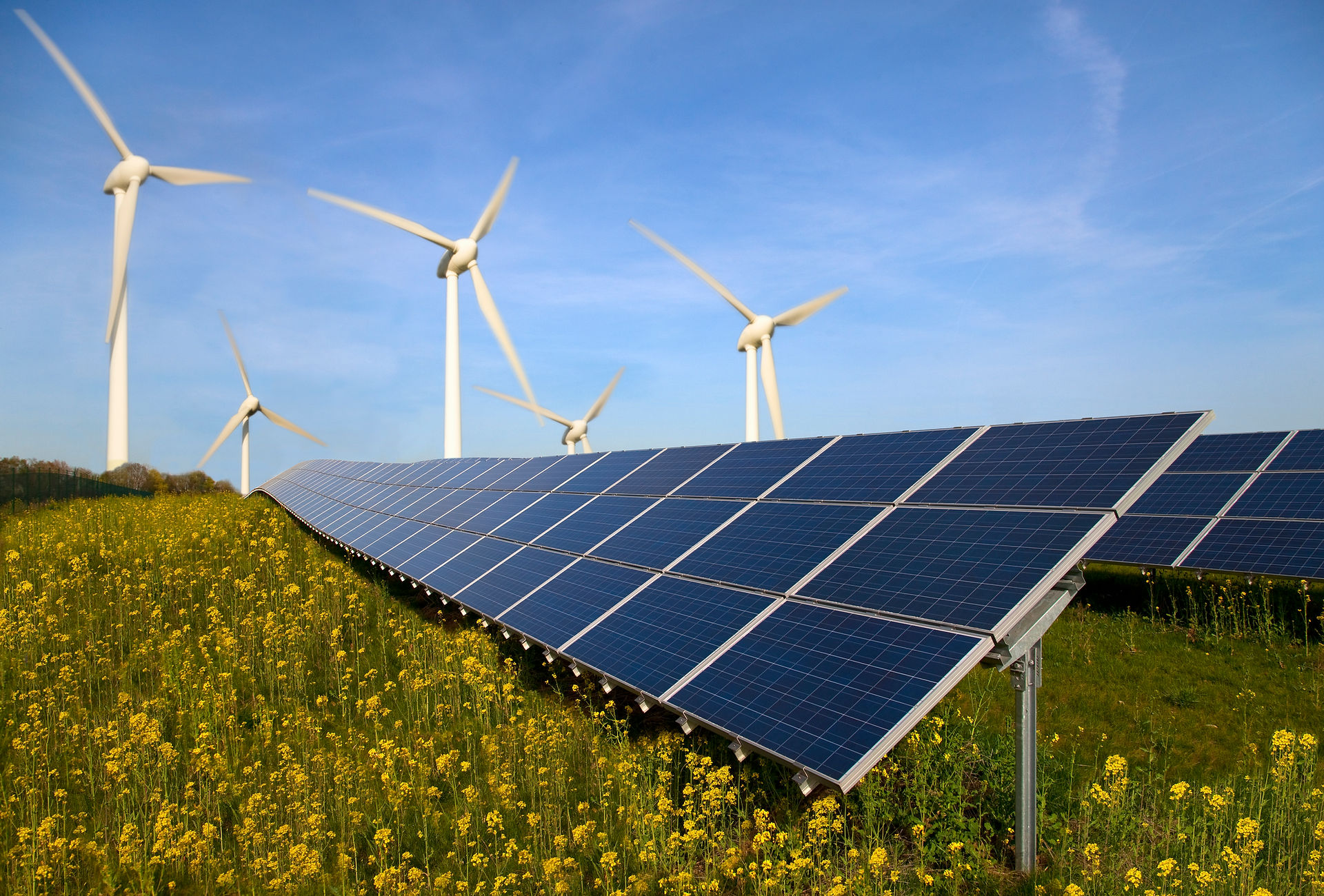Wind, solar deliver stunning 98 percent of new U.S. power capacity in January, February
Renewables to provide 69 percent of new capacity by March 2021, as dozens of coal plants are retired

WIND TURBINES AND SOLAR PANELS IN CALIFORNIA, 2013. CREDIT: KEVORK DJANSEZIAN/GETTY IMAGES
Solar and wind power was responsible for a remarkable 98 percent of all new U.S. power generation capacity that came online in the first two months of 2018.
According to the Federal Energy Regulatory Commission’s (FERC) latest “Energy Infrastructure Update,” the overwhelming majority of new power plants set up in January and February were renewable energy projects.
As FERC reports, during these two months, 1,568 Megawatts of wind and 565 MW of solar power capacity were put into service — along with just 40 MW of natural gas.

NEW U.S. GENERATION CAPACITY ADDED IN JANUARY, FEBRUARY. CREDIT: RENEWABLES NOW, FERC
While President Trump and Energy Secretary Rick Perry have been promoting policies that favor fossil fuel generation over renewables, FERC reports that most of the big new renewable energy projects came online in states that voted for Trump.
These projects include the 170 MW Beaver Creek Wind Project in Iowa, the 168 MW Prairie Wind Project, also in Iowa, and the 81 MW Stuttgart Solar Project in Arkansas.
The stunning and ongoing price drops in solar and wind have shifted the economics of new generation away from fossil fuels.
Indeed, FERC also projects that renewables will keep dominating the market for new power generation over the next three years, while coal power plants will keep being shuttered for the foreseeable future.
Of the nearly 212,000 MW of new net generating capacity — additions minus retirements — proposed by March 2021, renewables comprise almost 147,000 MW, or 69 percent of the total.

PROPOSED GENERATION ADDITIONS AND RETIREMENTS BY MARCH 2021. CREDIT: FERC
Meanwhile, FERC reports that over the next three years, 70 coal power units will be shut down while only 5 new ones are expected to be added. Net coal generation will drop by more than 15,000 MW.
The coal and nuclear industries have been wooing both Trump and Perry to get an emergency intervention, which is to say, a massive bailout.
But whatever the Administration does in the short term, the global shift toward cheaper, cleaner energy is unstoppable.
Click here for article.

